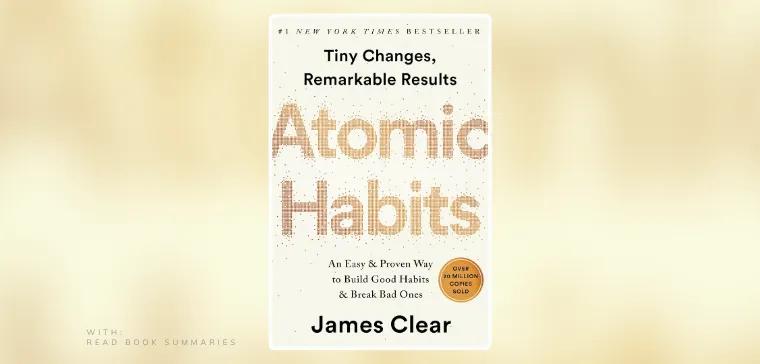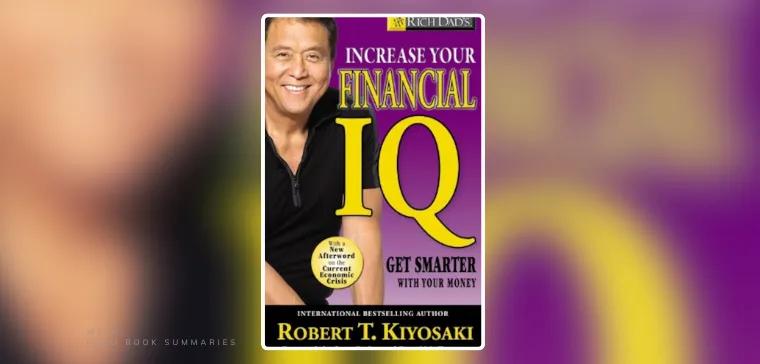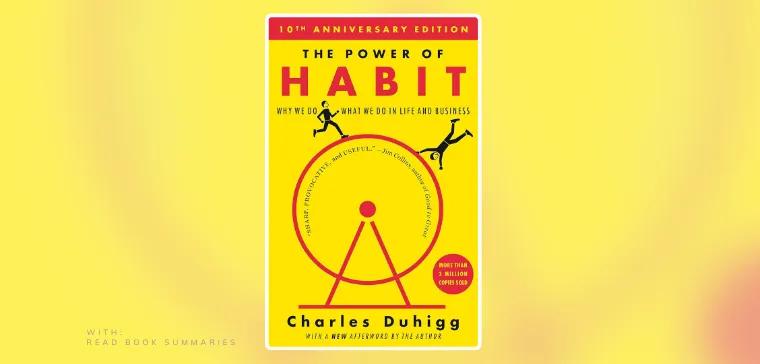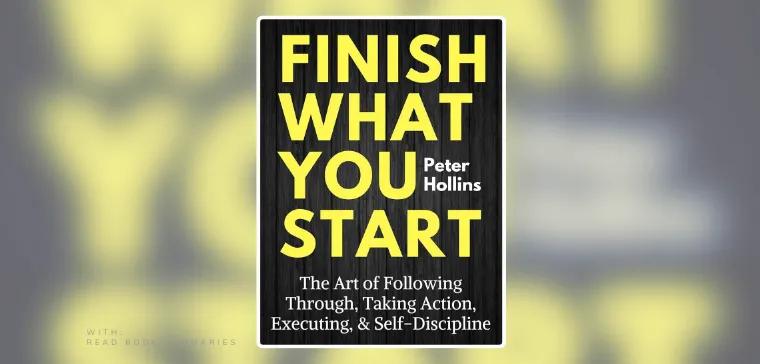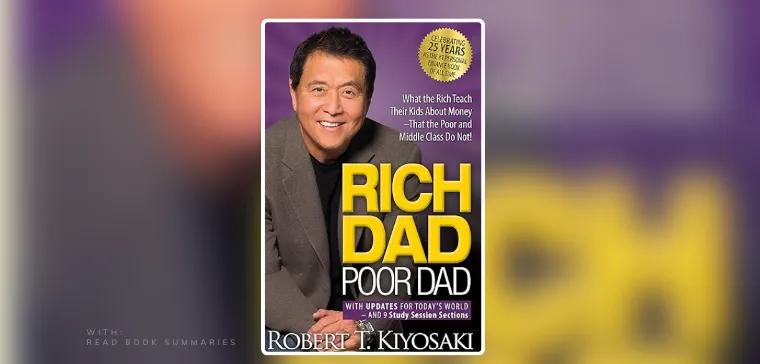

Discover the Secrets of the Rich: A Journey with "Rich Dad Poor Dad"
Have you ever thought about the real difference between those who work for money and those who let money work for them? This is the central question posed by Robert T. Kiyosaki in his timeless bestseller, "Rich Dad Poor Dad." This revolutionary book has transformed the way millions of people perceive wealth and financial education.
"The main cause of poverty or financial struggle is fear and ignorance, not the economy or the government or the rich."
By reading this article, you will discover the essential lessons Kiyosaki learned from his two fathers, and how these teachings can change your perspective on money. Get ready to explore concepts that challenge traditional financial advice and discover strategies to achieve financial freedom.
Dive into this captivating overview and be inspired by Kiyosaki's bold ideas. Ready to transform your vision of wealth? Continue reading to learn how to apply these principles to your own life.
Chapter: Introduction

In the introduction of "Rich Dad Poor Dad," Robert T. Kiyosaki immerses us in his childhood, marked by the influence of two father figures with diametrically opposed financial philosophies. His "poor dad," his biological father, was a highly educated man but struggled financially. In contrast, his "rich dad," his best friend's father, did not finish high school but became one of the richest men in Hawaii.
Two Fathers, Two Philosophies
Kiyosaki explains that his poor dad saw formal education as the key to success, while his rich dad believed in the importance of financial education and investment. For example, his poor dad often said, "The love of money is the root of all evil," while his rich dad asserted, "The lack of money is the root of all evil." This duality prompted Kiyosaki to think deeply and choose his own path.
Life Lessons and Reflection
The introduction highlights the importance of personal reflection and informed decision-making. Kiyosaki learned that wealth does not simply come from a good salary, but from the ability to make money work for you. For example, his rich dad taught him to never say "I can't afford it," but rather to ask, "How can I afford it?" thus encouraging creativity and problem-solving.
Importance of Financial Education
Kiyosaki emphasizes that financial education is often neglected in schools, leaving many people unprepared to manage their finances. He observes that many people, even those with good jobs, struggle financially because they have never learned to make money work for them. This introduction thus lays the foundation for the lessons that follow, highlighting the importance of financial literacy and critical thinking to achieve financial freedom.
In conclusion, the introduction of "Rich Dad Poor Dad" encourages the reader to question preconceived ideas about money and consider alternative approaches to building sustainable wealth. It sets the stage for the practical lessons and financial strategies that Kiyosaki will develop in the following chapters, promising an informative and transformative journey.
Chapter: Lesson 1: The Rich Don't Work for Money

In the first chapter of "Rich Dad Poor Dad," Robert T. Kiyosaki introduces a fundamental lesson: "The rich don't work for money." This idea is illustrated through his childhood experiences with his two father figures, his "poor dad" and his "rich dad."
The Difference in Mindset
Kiyosaki explains that his poor dad, although educated and holding a good position, worked hard for a salary but remained financially unstable. In contrast, his rich dad, who did not have a college degree, became one of the richest men in Hawaii. The difference lay in their approach to money: the poor dad believed in job security, while the rich dad believed in the importance of making money work for you. For example, the rich dad taught Kiyosaki that saying "I can't afford it" closed the mind, whereas asking "How can I afford it?" stimulated creativity and problem-solving.
The Importance of Financial Education
Kiyosaki emphasizes that financial education is often neglected, leaving many people unprepared to manage their finances. He recounts how, at nine years old, he began working for the rich dad to learn how money works. The rich dad taught him that most people work for money out of fear of not being able to pay their bills, but the rich let money work for them. For example, instead of just earning a salary, the rich dad invested in assets that generated passive income.
A New Perspective
This chapter encourages the reader to rethink their relationship with money. Kiyosaki learns that the key to wealth lies in the ability to use money as a tool to generate more wealth, rather than simply working for a salary. This fundamental lesson sets the stage for the more advanced concepts that Kiyosaki will develop in the following chapters, encouraging readers to pursue their financial education to achieve economic freedom.
In conclusion, this chapter lays the foundation for a new way of thinking about money, emphasizing the importance of financial education and managing emotions related to money. It invites readers to explore how they can make money work for them, rather than working for money, promising valuable lessons in the chapters to come.
Chapter: Lesson 2: Why Teach Financial Literacy?

In the second chapter of "Rich Dad Poor Dad," Robert T. Kiyosaki highlights the crucial importance of financial literacy, a field often neglected in traditional education. He explains that understanding finances is essential to avoid the economic traps that ensnare many people in a life of debt and financial stress.
The Importance of Financial Literacy
Kiyosaki begins by emphasizing that most people do not understand the difference between an asset and a liability, leading them to disastrous financial decisions. For example, many consider their home an asset, when in reality, it can be a liability if it does not generate income. He insists that the rich acquire assets that put money in their pockets, while the poor and middle class accumulate liabilities they believe to be assets.
The Consequences of Financial Ignorance
Kiyosaki uses simple examples to illustrate how financial ignorance can lead to economic problems. He tells the story of people who earn a good living but end up deeper in debt because they do not know how to manage their money. For example, a doctor may earn a high salary but be constantly in debt due to poor investments and a lack of understanding of personal finances.
The Need for Financial Education
The chapter emphasizes that financial education should be a priority from a young age. Kiyosaki explains that schools teach academic and professional skills, but not how to manage money. He suggests that children learn to read financial statements and understand basic investment concepts so they can make informed decisions in the future.
In conclusion, Kiyosaki calls for a reform of education to include financial literacy, so individuals can build a solid foundation for their economic future. This chapter encourages readers to reflect on their own financial education and consider ways to improve their understanding of money, thus preparing the ground for the practical lessons to come in the book.
Chapter: Lesson 3: Mind Your Own Business

In the third chapter of "Rich Dad Poor Dad," Robert T. Kiyosaki emphasizes the importance of "minding your own business." He explains that the key to financial freedom lies in the ability to develop and manage your own assets, rather than focusing solely on working for a salary.
Building Your Own Asset
Kiyosaki begins by highlighting that most people spend their lives working for others, whether it be their employer or the government, through taxes. He insists that to become financially independent, it is crucial to build your own portfolio of assets. For example, he recommends investing in real estate, stocks, or creating a business that generates passive income. These assets are sources of income that continue to grow even when you are not actively working.
The Difference Between Assets and Liabilities
A central point of the chapter is the distinction between assets and liabilities. Kiyosaki explains that many people confuse the two, thinking their home is an asset, when in reality, it can be a liability if it does not generate income. He uses the simple example of a rental house which, unlike a primary residence, can be considered an asset because it brings in money each month.
Taking Control of Your Financial Life
Kiyosaki encourages readers to take control of their financial life by focusing on acquiring assets. He emphasizes that this requires discipline and a willingness to continually learn. For example, he recounts how he began investing in real estate while working at Xerox, which allowed him to generate enough passive income to leave his job and focus on his investments.
In conclusion, this chapter encourages readers to reflect on their own financial situation and consider ways to develop their assets to achieve financial freedom. Kiyosaki thus sets the stage for the following lessons, emphasizing the importance of financial education and proactive management of personal finances.
Chapter: Lesson 4: The History of Taxes and the Power of Corporations

In chapter 4 of "Rich Dad Poor Dad," Robert T. Kiyosaki explores the history of taxes and the crucial role corporations play in managing wealth. He begins by explaining how taxes, initially designed to tax the rich, ended up primarily affecting the middle class. This evolution is due to the cleverness of the rich who have learned to use the laws to their advantage, notably through corporations.
The Origin of Taxes
Kiyosaki recounts that the idea of taxes was born from the desire to take from the rich to give to the poor, a concept inspired by the legend of Robin Hood. However, this approach quickly evolved, and taxes began to affect the middle class more than the rich. The rich, thanks to their knowledge of laws and finances, have learned to circumvent these taxes by using corporate structures.
The Power of Corporations
Corporations are presented as a powerful tool that the rich use to protect and grow their wealth. Unlike individuals, corporations benefit from many tax advantages. For example, a corporation can deduct its expenses before paying taxes, whereas an individual must pay taxes on their gross income. Kiyosaki illustrates this with a simple comparison: if a person earns 100 dollars, they pay taxes on those 100 dollars. In contrast, a corporation can spend part of those 100 dollars on various expenses before being taxed, thus reducing its taxable income.
Financial Education
Kiyosaki emphasizes the importance of financial education to understand and use these mechanisms to one's advantage. He criticizes the traditional education system that does not teach how money works, leaving most people without the tools necessary to effectively manage their finances. He encourages readers to educate themselves on tax laws and consider creating corporations to benefit from the same advantages as the rich.
In conclusion, this chapter highlights the necessity of understanding the tax system and using corporate structures to protect one's wealth. Kiyosaki urges his readers not to settle for working for money, but to learn to make money work for them, using the same strategies as the rich. This chapter makes you want to continue reading to discover other financial strategies and thus take control of your financial future.
Chapter: Lesson 5: The Rich Invent Money

In chapter 5 of "Rich Dad Poor Dad," Robert T. Kiyosaki explains how the rich create money through their financial intelligence and ability to see opportunities where others see only obstacles. This chapter highlights the importance of innovation and creativity in financial management.
The Importance of Financial Education
Kiyosaki begins by emphasizing that most people do not see financial opportunities because they lack financial education. He compares this to a blind person who cannot see a rainbow. For example, he explains that many people think that to earn more money, they must work harder. However, the rich know that money can be created from nothing through smart investments and understanding of markets.
Seeing Opportunities Where Others See Risks
One of the key points of the chapter is the ability of the rich to identify and exploit opportunities. Kiyosaki uses the example of Ray Kroc, the founder of McDonald's, who understood that the real business was not selling hamburgers, but owning land. This vision allowed him to transform McDonald's into a real estate empire. Similarly, Kiyosaki encourages readers to develop their vision to see hidden opportunities in everyday situations.
Innovation as a Driver of Wealth
Kiyosaki insists that innovation is essential for creating wealth. He explains that the rich do not just follow established rules, but invent new ways to make money. For example, he shares how he himself used his knowledge to invest in real estate and create businesses, thus turning ideas into sources of income.
In conclusion, this chapter encourages readers to broaden their perspective and develop their financial education to invent money. Kiyosaki encourages not just working for money, but learning to make money work for oneself. This chapter makes you want to continue reading to discover other strategies and tips for achieving financial freedom.
Chapter: Lesson 6: Work to Learn—Don't Work for Money

In chapter 6 of "Rich Dad Poor Dad," Robert T. Kiyosaki emphasizes the importance of working to learn rather than working solely to earn money. He explains that acquiring a variety of skills is essential for long-term financial success.
The Importance of Continuous Learning
Kiyosaki begins by emphasizing that most people focus on job security and salary, neglecting the learning of new skills. He shares the example of a talented journalist who dreams of becoming a successful author. Kiyosaki advises her to learn to sell, as sales is a crucial skill for promoting her books. Although she is reluctant to train in sales, Kiyosaki insists that this skill could transform her career.
Diversifying Skills
Kiyosaki recounts how his "rich dad" encouraged him to work in different departments of his businesses to acquire a variety of skills. Unlike his "poor dad" who advocated specialization, his "rich dad" believed it was important to "know a little about a lot of things." For example, Kiyosaki worked in accounting, sales, and marketing, which allowed him to understand the overall functioning of a business. This approach gave him the flexibility and ability to seize various opportunities.
The Value of Failure and Experience
Kiyosaki also insists on the importance of failure as a learning tool. He explains that every failure is an opportunity to learn and improve. For example, he shares how he left a well-paying job to join the Marine Corps and learn to fly, a decision that enriched his experience and skills.
In conclusion, this chapter encourages readers to step out of their comfort zone and embrace continuous learning. Kiyosaki emphasizes that working to learn, rather than for a simple salary, is the key to building a successful career and achieving financial freedom. This chapter encourages continuing reading to discover other strategies that allow money to work for oneself.
Chapter: Overcoming Obstacles

In the chapter "Overcoming Obstacles" of "Rich Dad Poor Dad," Robert T. Kiyosaki explores the reasons why even financially educated people can fail to achieve financial independence. He identifies five main obstacles: fear, cynicism, laziness, bad habits, and arrogance.
Fear
Fear is a major obstacle that prevents people from taking financial risks. Kiyosaki explains that the fear of losing money is often stronger than the desire to gain. For example, many people avoid investing in the stock market for fear of losing their savings, even though it could yield a lot in the long run. To overcome this fear, it is crucial to educate oneself and understand that losses are part of the learning process.
Cynicism
Cynicism manifests as doubt and distrust of opportunities. Kiyosaki tells the story of a friend who hesitated to invest in real estate for fear that the market would collapse. This skepticism prevented him from seizing a lucrative opportunity. To counter cynicism, it is important to do your own research and make decisions based on facts rather than irrational fears.
Laziness
Laziness is not only physical but also mental. Many people say they are too busy to take care of their finances. Kiyosaki emphasizes that laziness can be overcome by finding a sufficiently motivating reason to act, such as the desire to take care of one's family. He advises turning laziness into productivity by setting clear goals and taking concrete steps to achieve them.
Bad Habits
Bad financial habits, like spending before saving, can hinder financial growth. Kiyosaki recommends paying yourself first, that is, saving and investing before paying others. This creates positive pressure to generate more income and avoid debt.
Arrogance
Arrogance is often a mask for ignorance. Kiyosaki explains that many people refuse to learn new things because they think they already know everything. He encourages humility and open-mindedness, emphasizing that continuous learning is essential for financial success.
In conclusion, Kiyosaki insists on the importance of recognizing and overcoming these obstacles to achieve financial freedom. He encourages readers to adopt a growth mindset, continually learn, and take calculated risks. This chapter encourages reflection on one's own behaviors and commitment to a path toward better financial management, paving the way for a more fulfilling and secure life.
Chapter: Getting Started

In the chapter "Getting Started" of "Rich Dad Poor Dad," Robert T. Kiyosaki guides readers on the first steps to take control of their financial future. He emphasizes the importance of financial education and proactive action to break free from the "rat race."
The Importance of Financial Education
Kiyosaki begins by emphasizing that most people are not trained to recognize financial opportunities. He compares this to learning to ride a bike: at first, you wobble, but with practice, it becomes easy. He encourages readers to awaken their inner "financial genius," often dormant due to cultural beliefs that demonize money. For example, he explains that many people believe that the love of money is the root of all evil, whereas in reality, it is the lack of money that often causes problems.
Taking Concrete Steps
Kiyosaki proposes practical steps to start investing and building assets. He tells the story of a friend who turned a small real estate investment into a substantial source of income to fund his children's education. This friend bought a house at a low price, rented it out, and used the profits to invest in other opportunities. Kiyosaki insists that action is essential: knowing the theory is not enough, you must also take action to see results.
Personal Discipline
Another key point of the chapter is personal discipline. Kiyosaki explains that to succeed financially, you must learn to pay yourself first, that is, to invest in your assets before paying your expenses. He uses the example of people who, despite high incomes, end up in debt because they lack financial discipline. He emphasizes that self-control is what distinguishes the rich from others.
In conclusion, Kiyosaki encourages readers to start their journey toward financial independence by educating themselves, taking concrete steps, and developing personal discipline. This chapter encourages reflection on financial habits and making decisions that lead to a freer and more secure life, paving the way for the following chapters that will delve deeper into these concepts.
Chapter: Want Even More? Here Are Some Tasks to Do

In the chapter "Want Even More? Here Are Some Tasks to Do" of "Rich Dad Poor Dad," Robert T. Kiyosaki offers concrete actions for those who wish to deepen their financial education and take control of their economic future. This chapter is a roadmap for transforming theoretical lessons into real practices.
Developing Financial Intelligence
Kiyosaki begins by emphasizing the importance of continuous education. He encourages readers to read books, attend seminars, and surround themselves with people who have succeeded financially. For example, he recommends reading books on investment and money management to broaden one's knowledge. He insists that learning should never stop, as the financial world is constantly evolving.
Taking Practical Steps
Next, Kiyosaki proposes specific actions to put acquired knowledge into practice. He suggests starting with small investments to become familiar with the process. For example, buying a few stocks or investing in a modest property can be a good start. He explains that practical experience is essential to understand market nuances and develop financial intuition.
Cultivating Personal Discipline
Another crucial point addressed is personal discipline. Kiyosaki explains that to succeed financially, it is essential to pay yourself first, that is, to invest in your assets before spending on leisure. He uses the example of people who, despite high incomes, end up in debt because they lack financial discipline. He emphasizes that self-control is what distinguishes the rich from others.
Avoiding Common Traps
Finally, Kiyosaki warns against common traps that prevent financial progress, such as the fear of failure and lack of patience. He encourages readers to see mistakes as learning opportunities rather than failures. For example, if an investment does not go as planned, he advises analyzing what went wrong and adjusting the strategy.
In conclusion, this chapter is a call to action for those who want to go beyond mere reading and start applying the principles of "Rich Dad Poor Dad" in their daily lives. Kiyosaki encourages readers to take concrete steps, stay disciplined, and continue learning to achieve financial freedom. This chapter prepares the ground for the next steps in the financial journey, encouraging a proactive and thoughtful approach.
Chapter: Conclusion

In the conclusion of "Rich Dad Poor Dad," Robert T. Kiyosaki recaps the essential lessons he has shared throughout the book, emphasizing the importance of financial education to achieve economic freedom. He insists that wealth is not only measured by money but by the ability to make money work for you.
The Importance of Financial Education
Kiyosaki reminds us that financial education is the key to escaping the "rat race," where one constantly works to pay bills without ever really progressing financially. He uses the example of his two fathers to illustrate how different perspectives on money can lead to very different financial outcomes. His "rich dad" taught him to invest in assets that generate passive income, while his "poor dad" focused on job security.
Taking Control of Your Financial Future
He encourages readers to take concrete steps to improve their financial situation, such as investing in real estate or stocks, and not just working for a salary. For example, he recounts how he started investing in real estate with little capital but with a lot of determination and knowledge, which allowed him to build sustainable wealth.
Changing Your Mindset
Kiyosaki emphasizes that changing your mindset is crucial. You must shift from an employee mindset to that of an investor. He explains that the fear of losing money should not prevent you from investing, as it is by taking calculated risks that you can truly prosper. He uses the analogy of learning to ride a bike: at first, you fall, but with practice, you end up riding effortlessly.
In conclusion, Kiyosaki encourages readers to continue learning and applying the principles he has shared to achieve financial freedom. He encourages them to see money as a tool to create opportunities and not as an end in itself. This conclusion inspires making informed decisions and pursuing a path toward economic independence.
Conclusion

As we began this article, we explored the fundamental teachings of "Rich Dad Poor Dad" by Robert T. Kiyosaki, a book that challenges our traditional perception of money and financial education.
Kiyosaki teaches us that true wealth does not lie in working hard for a salary, but in the ability to make money work for us. He highlights the importance of financial education, investing in assets, and critical thinking in the face of preconceived ideas about money.
Personally, this book opened my eyes to the importance of making informed financial decisions and not just following the path laid out by society. It inspired me to seek investment opportunities and develop an entrepreneurial mindset.
"It's not how much money you make, but how much money you keep."
To apply these teachings, start by evaluating your current financial habits and identifying ways to invest in assets that generate passive income. Ask yourself: how can I make my money work for me?
I strongly encourage you to read "Rich Dad Poor Dad" to deepen your understanding of personal finance and transform your approach to money.
Chapter: Financial IQ #4: Leveraging Your Money

In the chapter "Financial IQ #4: Leveraging Your Money" from Increase Your Financial IQ, Robert T. Kiyosaki explores how to use leverage to maximize financial gains. He explains that leverage is a powerful tool that allows you to multiply financial results without proportionally increasing effort or risk.
Understanding Leverage
Kiyosaki begins by defining leverage as the use of external resources to amplify results. This can include using other people's money, time, skills, or technologies to increase income. For example, investing in real estate with a mortgage is a form of leverage because it allows you to acquire a valuable asset with a relatively small initial investment. Kiyosaki emphasizes that leverage can be a powerful ally for those who know how to use it wisely.
Illustrative Examples
To illustrate his points, Kiyosaki shares the story of a real estate investor who used leverage to buy several properties with little initial capital. By renting these properties, the investor was able to generate positive cash flow while paying off the loans. Conversely, Kiyosaki warns against the dangers of poorly used leverage, citing examples of people who accumulated unsustainable debt by speculating on volatile markets without a solid strategy.
In conclusion, Kiyosaki encourages readers to educate themselves on the use of leverage to maximize their financial opportunities. This chapter encourages reflection on strategies to use leverage responsibly, preparing the reader to explore other aspects of financial intelligence in the following chapters.
